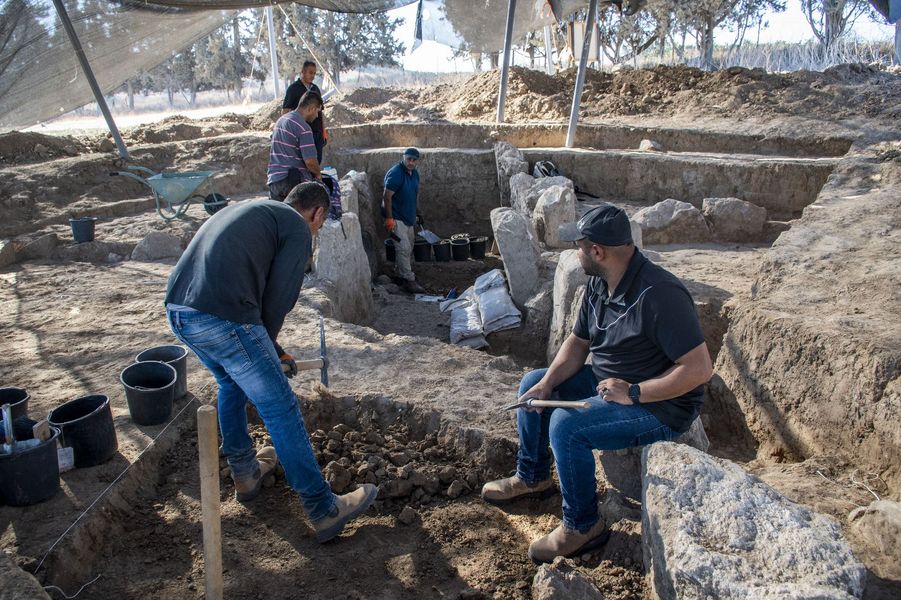Israeli archaeologists discovered a monumental 5,500-year-old gate at Tel Erani in southern Israel, offering new insights into ancient urbanization.
The archaeologists were excavating an area near Kiryat Gat’s industrial zone, funded by the Mekorot — the national water company of Israel, prior to laying water pipes to supply water to the Intel factory.
This discovery makes it Israel’s earliest city gate by centuries. Attached to city walls found in earlier excavations, about 1.5 meters of the gate remains intact. Dating to the Early Bronze Age, people constructed this stone gate by importing giant stone blocks and augmenting them with the usual local mud brick. But the rationale behind what had to have been a vast construction effort remains enigmatic. Standing nearly five feet tall, the gate also included a stone passageway through the city walls and two stone guard towers.
“This is the first time that such a large gate dating to the Early Bronze IB has been uncovered,” said Emily Bischoff – the director of the excavation – in a Facebook post by the Israel Antiquities Authority.
The team used pottery found with the gates to determine that they were both in use during the time. The gate would have served as both a defence and a signal of political, social, and economic fortitude during a time when the Lower and Upper Kingdoms of Egypt were undergoing unification. By the end of the Bronze Age, the two empires were one.
Prior to this discovery, the earliest known gate in Israel was at Tel Arad, built three centuries later.
Although Tel Erani’s occupation dates back to the Chalcolithic period, it experienced significant settlement during the Bronze Age. Tel Erani was located on the coastal plain and likely had trade relations with the interior and coast. Archaeologists agree that it portrays a relatively early instance of urbanization, showcasing public architecture, certain indications of economic specialization and trade, and a high population density – although they have not provided any estimates of its population so far. Based on Bronze Age pottery found at the site, archaeologists know that Tel Erani traded with other areas in the region such as the Negev and the Judean Desert.
After the excavation, archaeologists covered the gate up to protect it from erosion. Mekorot Water Company also moved the planned water pipe in order to preserve the gate. The extensive excavations carried out by the Israel Antiquities Authority over recent years have led to dating the beginning of urbanisation to the end of the fourth millennium BCE, but the excavations carried out at Tell Erani have now shown that this process began even earlier, in the last third of the fourth millennium BCE.





